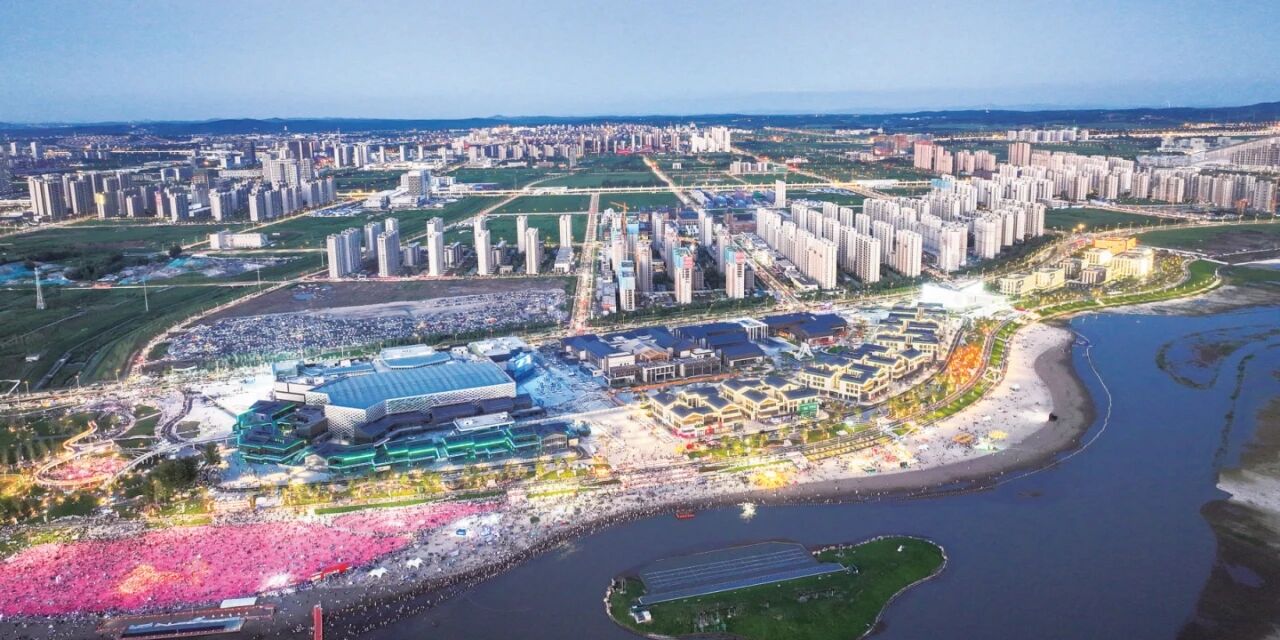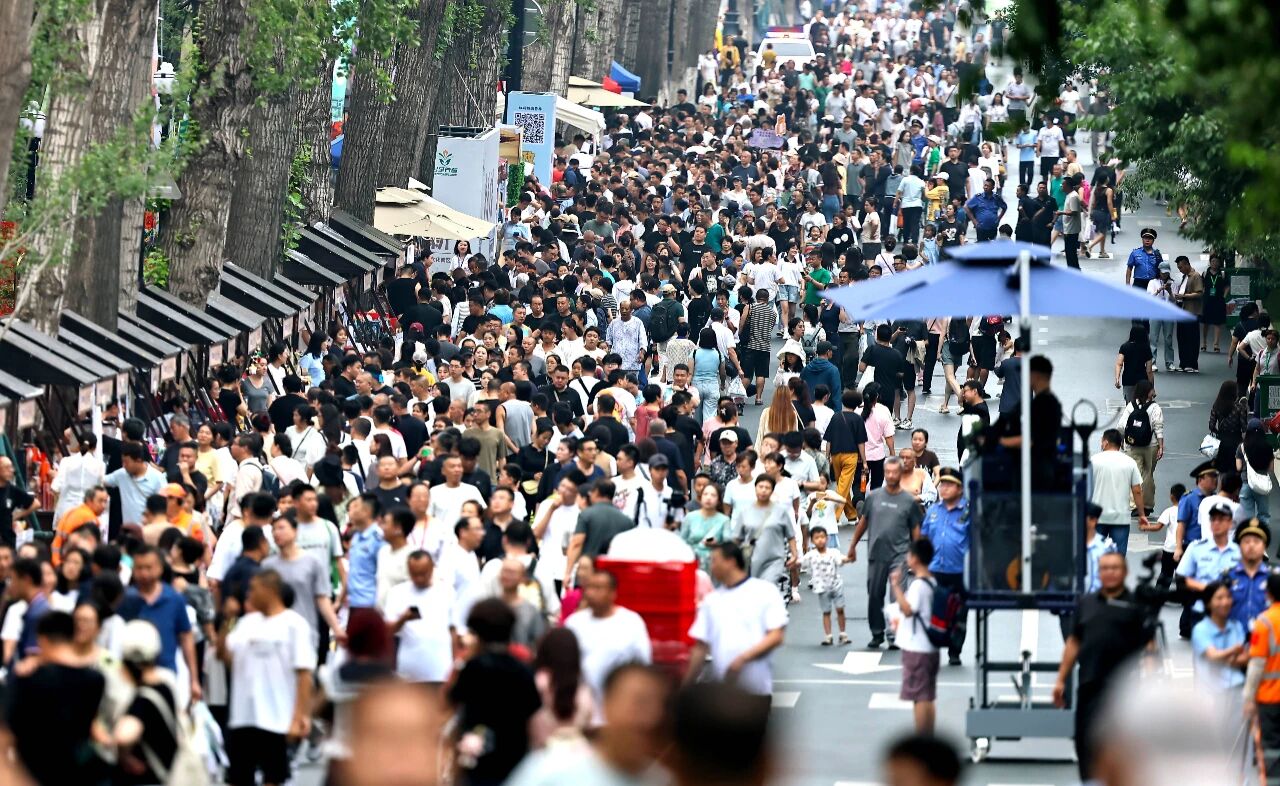Driving Urban Development through Culture and Tourism: Changchun Steps Up Efforts to Build a National Cultural Tourism Industry Hub
Since the 2023 Changchun Conference on High-Quality Development of the Cultural Tourism Industry sounded the call for "promoting the high-quality and leapfrog development of the cultural tourism industry", Changchun has been striving toward the goal of building itself into a "National Cultural Tourism Industry Hub". By enriching its cultural heritage and leveraging tourism as a driving force, the city has tapped into its dual advantages in ice and snow and summer resort resources while activating historical and ecological assets. In just two years, Changchun's cultural tourism industry has achieved all-round growth in scale, quality, and efficiency. Old tourist attractions have been revitalized, new ones have flourished, and the city has delivered an impressive report card ahead of the upcoming 2025 Conference on High-Quality Development of the Cultural Tourism Industry.

Industry Scales New Heights, Projects Gather Momentum
The vitality of the cultural tourism market serves as the most intuitive measure of a city's appeal. Over the past two years, Changchun's cultural tourism industry has experienced rapid growth, with market vitality surging, consumption potential steadily unleashed, and both the number of tourists and tourism spending showing simultaneous growth. According to preliminary estimates from the Changchun Branch of the Data Center of the Ministry of Culture and Tourism of the People's Republic of China, in 2024, Changchun received 172 million visitors and achieved total tourism spending of RMB 302.6 billion, representing year-on-year increases of 17% and 25%, respectively— up 207.14% and 287.26% from 2022. The momentum has continued into 2025. From January to September, the city received 181.7 million domestic tourists, with total domestic tourism spending reaching RMB 288.858 billion, marking year-on-year increases of 28.05% and 13.27%, respectively. Changchun's cultural tourism industry now shows a sound pattern of diversified growth and coordinated development.
Project construction has been key to this progress. In recent years, Changchun has actively advanced the "six new industries" and "four new facilities" initiatives, establishing a database of major cultural and tourism projects. In 2024, the city had 281 cultural tourism projects under construction or in planning, including 108 projects with an investment of over RMB 50 million, totaling RMB 186.123 billion in planned investment. In 2025, 78 key projects of more than RMB 50 million, including The Water (Zhe You Shui), Fantawild, Wanda Mall, and Senlo Tourist Resort (Phase II), are being advanced. As of August, RMB 5.25 billion had been invested, and 37 projects are scheduled to be completed and put into operation within the year. New projects like the Dream Stars Aerospace Science and Education Museum, Lianhuadao Tank Park, and Campers in Changchun New Area have opened to the public. Industry leaders such as Fantawild, Minkave Technology Co., Ltd., and Shanghai Leqee have established projects in Changchun, creating strong industrial clusters to support sustained development.
"Cultural Tourism +" Boosts Coordinated Industrial Development and Strengthens All-Season Brands
By fostering cross-sector integration and creating synergies through collaboration, and with the goal of becoming a "National Cultural Tourism Industry Hub", Changchun has broken traditional industry boundaries. Through the "Cultural Tourism +" model, the city has promoted deep integration and mutual empowerment between cultural tourism and such fields as science and technology, industry, and agriculture. This has not only enlarged the cultural and tourism industry itself but also driven the coordinated development of related industries.
Over the past two years, new business formats, including metaverse-themed cultural tourism products and immersive mini-theaters like "Star Space", have emerged in the city, while digital platforms such as One-Stop Changchun Travel have gone online. The fusion of cultural tourism and technology has enhanced product appeal and fostered new growth engines for industrial development. Moreover, the cross-border linkage of cultural tourism and industry has breathed new life into industrial heritage. Old factory buildings such as the Changchun Tractor Plant have been transformed into consumption spaces, attracting a cluster of businesses in cultural creativity, catering, accommodation, and more. Industrial tourism destinations like the Hongqi Culture Exhibition Hall have strengthened visitors' awareness and pride in national brands, further supporting industrial growth. Meanwhile, the deep integration of cultural tourism and agriculture has promoted the coordinated development of rural tourism and modern agriculture. A number of high-quality projects, like the Senlo Tourist Resort, Tianding Mountain Tourist Resort Town, and rural homestays, have become highly popular, creating job opportunities for local farmers and contributing to rural revitalization.
In promoting industrial integration, Changchun has also followed an "all-time, all-season, and all-region" development approach. By continuing to advance its "Urban Ice and Snow" and "Summer Retreat" initiatives, the city has enriched its cultural tourism product offerings, making the vision of 'a city enjoyable in all seasons, with delights around every corner' a reality. The ongoing cultivation of its all-season tourism brands has enhanced citizens' and tourists' experiences while significantly boosting Changchun's attractiveness and reputation as a cultural tourism destination.

Revitalizing Old Tourist Attractions and Creating New Ones for Shared New Spaces
Taking urban renewal as an opportunity, Changchun has activated the endogenous power of established IPs and shaped the unique charm of new ones, allowing old tourist attractions to come alive and new destinations to rise in popularity through synergistic development.
To meet increasingly diverse visitor needs, Changchun's old tourist attractions have proactively embraced transformation, breaking away from traditional operation models and upgrading the experience scenarios. Changchun Movie Wonderland has launched the "Wonderful Night in Mountains and Seas", using light-and-shadow technology and interactive performances to transform the classic film-themed park into a dreamlike night destination—achieving round-the-clock operation. Jingyuetan National Scenic Area has introduced attractions such as the Starry-Sky Cable Car, Longyou Jingyue, and Wetland Bamboo Rafting, where intangible cultural heritage elements bring the forest, water, and the starry sky together in a tranquil and romantic harmony. These initiatives have not only extended visitor stays but also revitalized old tourist attractions through scene renovation and experience enhancement.
While old tourist attractions are being revitalized, a series of new spaces carrying urban memory and ecological endowment have made a stunning debut in Changchun, rapidly gaining popularity through distinctive positioning. Today, Xinmin Street has become a new cultural tourism landmark, where open courtyards and newly built pocket parks have become places for leisure and recreation. Weekend events such as the Xinmin Market and Xinmin Walk have transformed this 'historical corridor', which carries the city's memories, into the city's 'living room'. The popular Xinmin Street has also driven the consumption upgrading of the Guilin Road and Hongqi Street business areas, achieving the goal of "renovating one street to renew one block". Similarly, the opening of the Beijing Street West Historical and Cultural Block has created a dynamic fusion of history and culture and modern creativity, with wonderful brand events such as the "Drama Festival" and "Literature Season" injecting fresh cultural vitality into the area. The Kunchengzi Historical and Cultural Block's Runde · Dongtianli (Dongtian Street) combines history, culture, trendy technology, fine food, and immersive performances, giving century-old architecture a new lease on life. Along the Yitong River Cultural Tourism Belt, attractions such as Siji Nanhe Park, Changchun World Sculpture Park, and Changchun Culture of Water Ecology Park are linked like pearls on a string, together painting a vibrant picture of eco-cultural tourism where "the riverfront comes alive with activity, and the cityscape blends seamlessly with natural scenery".
From "Cultural Tourism +" to "+ Cultural Tourism", from "a single-season attraction" to "a year-round destination", and from "attraction-based tourism" to "all-region tourism", Changchun's cultural tourism industry has, over the past two years, achieved more than growth in numbers and project completion—it has elevated the city's character and enhanced people's well-being. With growing confidence and stronger momentum, Changchun is moving steadily toward its goal of becoming a "National Cultural Tourism Industry Hub".
Source: Changchun Government Affairs Editor: Liu Jiadi



